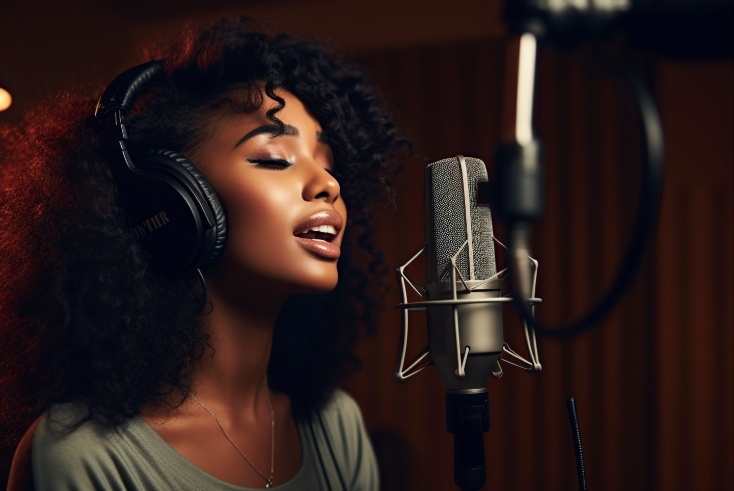Will brands have rights to AI-generated ads?

Opinion
Generative AI will be critical to the future of advertising across platforms, but is it worth doing if brands do not own the creative?
A recent court ruling in the US has potentially huge ramifications for advertisers as it states that AI produced art cannot be copyrighted there.
So, brands that use generative AI tools must be careful when producing creative if they want to own the rights to them.
Let me explain why generative AI is critical for brands and how to avoid the pitfalls of the latest legal rulings in the US.
Everyone is talking about generative AI and workplace implications, but I haven’t seen many examples of advertising activations just yet. That said, we’re already able to produce content that would be campaign ready. This is significantly faster and cheaper, and allows brands to personalise creative with minimal effort.
Using generative AI, we can now produce studio quality voice creative in seconds. We can then also create multiple variations of this that change place name or weather and then dynamically serve these ads automatically.
The ramification of this is that we can create audio ads in seconds, make them dynamic and then deliver them at significantly less costs. This will roll out to image and video in time as well as we’re also working on display, social and video.
The big tech players are all leaning into this area heavily too, so it’ll likely be the future of advertising on platforms.
What does AI-generated art mean for ads?
So, we save time and money, and deliver better customer engagement — hopefully a good thing! Problem is that if we can’t own the assets is it even worth doing? (Spoiler: yes, it’s still worth doing; read on to find out how…).
Going back to the US legal case, the basis for this decision is that there’s no human authorship involved, so AI-generated art doesn’t qualify for copyright in the US. This ruling suggests that advertisers employing AI for creative pursuits won’t be able to copyright their creations; brands could end up not owning their own assets.
This could pave the way for users to duplicate or modify creative materials without any legal barriers. Even more unsettling, rival brands could appropriate these assets, then launch their own derogatory campaigns against the original brand.
It’s not all doom and gloom though, all this case really says is that if an asset is 100% AI-generated, you can’t own it. Any advertising campaign will still have some element of human input (for instance the product photo needs to be taken by a human) meaning they could be protected. After all, the likes of Heinz and Coca Cola wouldn’t be using AI if they felt the risk was too large.
The legal debates are still raging, and governments are weighing in but while we wait for the laws to settle, let’s look at some of the ways a brand could try and protect their own creative.
I’ll also take this moment to caveat that I’m not a legal professional and you should consult one if you have specific immediate needs. For now, I’m working out how this might work in the UK:
Include a trademarked product image
Trademarked product images are protected from unfair use, meaning that some degree of protection would be granted.
Leverage a partnership
Working with a media partner with their own distinctive assets or content would also reinforce rights over the content as well as helping to create something distinct and unique.
Use of talent
Creative that features the image or voice of talent can only be used with the consent of that individual. If a brand has that consent, then only they can use that likeness.
Document the creative process
If you can show that there was human creative input, direction, and decision-making during the storyboarding and creative process, it might be argued that the resulting content isn’t purely AI-generated, but rather an AI-assisted work of human creativity.
Human scripts
Finally, if a human writes the script, then this would be protected. Quite often it’s the tagline or message of an ad that is the most memorable asset meaning that, while certain visuals could be borrowed, the essence of the ad copy would be protected.
Secret production
Viewers of ads won’t often be able to tell if an asset is AI-generated. If the production process is secret, then bad actors won’t know if they have the legal right to copy an existing brand asset.
Practicality and value
Taking a step back, the biggest protection is practicality. We can expect that early AI-generated campaign assets will be audio, display and social and on smaller scale campaigns.
Larger campaigns with significant media and creative investment will still justify more traditional production (for now). There’s no point copying an asset unless it’s recognisable, and if AI campaigns are small then they likely won’t be widely recognised.
This simply means that the value from imitation or copying creative will be limited until generative AI reaches a larger scale.
Finally, the real value of generative AI for creative is likely in the creation of dynamic creative assets. Since these will vary by user, there won’t be a single recognisable asset that would be worth copying either which would further serve to dissuade third parties from using a brand’s creative.
Generative AI will continue to see constant change and we can expect that it will disrupt the creative process further. How UK regulation will shift is yet to be seen but some of the tactics above will serve to protect your brand as generative AI continues its inevitable growth in importance.
 Will McMahon is head of adtech at Publicis Groupe media agency Spark Foundry UK.
Will McMahon is head of adtech at Publicis Groupe media agency Spark Foundry UK.



